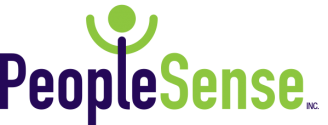In the “Gig Economy,” Strategic Workforce Optimization Can Lead to Cost Savings
In the aftermath of the Great Recession, star employees suddenly estranged from downsizing or failing companies were forced to find a new way to survive, and they created the “gig economy,” a collection of top talent with comprehensive, cloud-based, remote-working resources at their disposal, who decided they didn’t need or want the traditional 9-5. After Millennials started noticing this trend, work as we know it was changed forever.
Almost a decade after the Recession caused a sea change in American attitudes toward employment, talented former employees now run their own small companies, acting as freelancers or consultants on short-term assignments. Affordable overseas companies have reshaped the American business landscape into a frequently outsourced model. In response to these changes, savvy businesses have started to update the way they view employment and how they allocate their workforce resources across the organization.
Best-in-class companies that are doing this right have modified their workforce management strategies to match the new gig economy – and they’re saving a lot on operating expenses as a result. Read on to learn the three top changes today’s best-in-class companies are making to redefine their workforce optimization strategies and save money in the process.
1. They Expand the Role of HR into “Workforce Manager”
Traditionally, HR has been in charge of recruiting and incentivizing “permanent” employees within a company, but almost no departments or managers call on them to help with short-term or external employees, such as consultants, freelancers, or overseas professionals.
Best-in-class companies are starting to turn those traditions upside down by combining the roles of Procurement and HR into one overarching role of “Workforce Manager,” which finds and deploys “employees” of all kinds — permanent and short-term — to where they’re needed in a company.
Bottom-Dollar Benefits: This HR/Procurement role combination optimizes the workforce and saves money by reducing costly recruiting initiatives and expanding flexible freelancers to assist in more than one department.
2. They Redeploy Top Talent into Multiple Roles
A recent study by Bain & Company found that the so-called “war for talent” may very well be over. After conducting detailed organizational studies on 25 global companies, as well as surveying over 300 senior executives from large companies worldwide on their talent performance rates, Bain & Company determined that almost every single company has the same distribution of “star” talent: 15%, or roughly one out of every seven people.
Since results showed that every company had a similar amount of top talent, the difference clearly resulted from how star talent was utilized in a best-in-class company. After delving deeper, researchers determined that the top-performing companies placed their top-performing talent into the most mission-critical roles and departments to best ensure strategic growth.
Then, knowing that star talent tends to perform well across a variety of roles and responsibilities, they kept those employees flexible so they could fill in anywhere within the company, maximizing their roles and impact.
Bottom-Dollar Benefits: Companies with top talent in strategic areas are more likely to ensure success in mission-critical areas. In addition to the company growth and profit that arises directly from strategic growth, best-in-class companies also redeploy talented staff when needed, which saves them money in additional recruitment costs.
3. They Maintain Comprehensive Organizational Charts
It’s no secret that best-in-class companies use workforce management software to assist them with insight into company performance and spending trends. In today’s gig economy, companies that understand how their workload is distributed between regular and external workers can better plan for appropriate departmental resource allocation.
Normally, organizational charting software is only used in a company to show the connections between “permanent” employees and their hierarchical supervisors, but a comprehensive org chart that includes contract employees can illuminate the full oversight role each supervisor has, which helps top execs form a better picture of how talent is being spent.
Bottom-Dollar Benefit: By expanding the org chart to include contract workers, companies gain a better view of how many people each supervisor oversees (both internal and external), and can allocate budget resources realistically and appropriately.
Workforce Management Matters
In today’s ultra-competitive business landscape, it literally pays to retain top talent while enhancing the roles of flexible employees who can perform well in many departments; research shows that the companies that are doing this best can experience significant reductions in ongoing operating expenses.
By placing talent where it matters most, ensuring that your most skilled staff members are engaged in your most critical activities, and getting an overall picture of how your company is composed of an internal and external workforce, you can make smarter, faster decisions that keep your company agile and your employees happy and motivated.
Take the first step on your path to workforce optimization with the workforce experts at PeopleSense. We’ve spent the past 15 years helping companies achieve more with better workforce management systems, and we can help you too. Contact PeopleSense to learn more.



Recent Comments